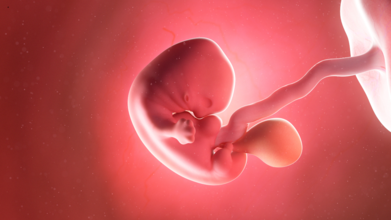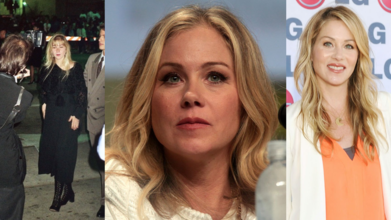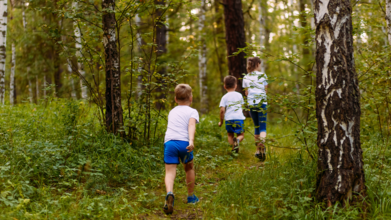- Health Conditions A-Z
- Health & Wellness
- Nutrition
- Fitness
- Health News
- Ayurveda
- Videos
- Medicine A-Z
- Parenting
- Web Stories
Who Are Japas And How Can They Help New Mothers?

Credits: Canva
Japa. If you not have heard the term before, I am sure you still know the meaning of it. You must have seen Japas, around your friends, your sisters, you female relatives who have just become new mothers.
The origin of this term is Sanskrit, which refers to the 45-day period following the bird of a child, during which the mother rests, recover, and bonds with her newborn. This sacred and traditional practice recognizes the significance of postpartum phase and allows mothers to rejuvenate and replenish after the long and tiring journey of carrying a baby for nine months.
In modern times, a Japa is a professional caregiver who supports the new born parents in child bird and cares for their child so the mother can recover well. She also ensures that the mother gets the care, including massages, and emotional support and help with her child that she needs. In such times, Japa can become a new mother's biggest support.
What Duties Does a Japa Perform?
Japa does a variet of tasks, and it mostly revolves around the newborn baby's care, mother's postpartum support and other household chores that caters to the baby and the mother's needs. These include:
Bathing the baby: A Japa carefully handles the baby during the newborn bath and is aware of the technique and can safely bathe the baby
Changing diapers: For the newborn's hygiene and comfort, frequent diaper changes are important and a Japa will ensure that it happens with uttermost care
Feeding and burping: A Japa can also help the new mother during breastfeeding sessions and makes sure that the baby is burped afterwards
In terms of mother's postpartum care, a Japa can do these following duties:
Nutritional Support: For a faster recovery for the mother, a balanced diet is always the most essential. Thus, a Japa is trained to understand the needs of a mother's body post pregnancy and prepares nutritious meals to support the breastfeeding mothers
Physical Recovery: Japas can also guide the new mothers with simple exercises and stretches that help them recover quickly. They also offer massage services to ensure that the mother's muscles and the body is relaxed and she can recover well
Household Chores
While Japas are not trained househelps, they can offer certain household chores which caters to the baby and the mother's needs. These include:
Meal Preparation: This is important for the mother, so the Japa takes care of the meal preparation, ensuring that the mother gets the right nutrition
Cleaning and Laundry: To ensure that clean and good hygiene is maintained around the baby, the Japa can also manage these cleaning tasks
What More Japas can do?
Japas also have knowledge of herbal medicines, they give remedies for parents and newborn babies. However, it is always advised that before consuming any such decoction, you must speak to your doctor.
Japas, since are experienced, they understand baby's body language and gestures. They can support the mother by telling her how to interpret these cues accurately and respond to them accordingly.
Baby Born From 30-Year-Old Frozen Embryo Sets Record: Here's All That We Know About It

Credits: Canva
In what’s believed to be a world record, a baby boy born last week in Tennessee developed from an embryo that had been frozen for more than 30 years. The child’s parents, Lindsey and Tim Pierce from Ohio, welcomed their son after years of infertility, thanks to an embryo that had been stored since 1994, for a staggering 11,148 days.
The birth, confirmed by their doctor as the longest known frozen embryo to result in a live birth, is more than just a medical milestone. It is a deeply human story about hope, difficult choices, and the quiet lives of embryos waiting in storage.
Three Little Hopes
The embryo came from Linda Archerd, a 62-year-old woman in Oregon who underwent in vitro fertilization (IVF) over three decades ago. After giving birth to a daughter in the 1990s and later going through a divorce, she was left with four remaining embryos. For years, she struggled with what to do with them.
“I felt all along that these three little hopes, these little embryos, deserved to live just like my daughter did,” Archerd said.
Unable to discard them and burdened by rising storage fees, she eventually connected with Snowflakes, a division of Nightlight Christian Adoptions that facilitates embryo donations. Snowflakes allowed Archerd to choose the adopting family and maintain some openness in the process, a priority for her.
“I wanted to be a part of this baby’s life,” she said. “And I wanted to know the adopting parents.”
A Long Journey, Frozen in Time
The process wasn’t simple. Archerd had to track down her original IVF clinic in Oregon, retrieve decades-old paper records, and coordinate the shipment of the embryos to Rejoice Fertility, a clinic in Knoxville, Tennessee. Rejoice is known for its willingness to work with older embryos and for its refusal to discard them.
Of the three embryos donated, one didn’t survive the thaw. Two were transferred into Lindsey Pierce’s womb, and one successfully implanted, leading to a healthy pregnancy and birth.
Dr. John David Gordon, the Pierces’ physician, called the birth historic. He also helped oversee a similar case in 2022, when siblings Lydia and Timothy Ridgeway were born from embryos frozen for 10,905 days.
“These stories always capture the imagination,” Gordon said. “But they also raise an important question, why are there still so many embryos sitting in storage?”
The Bigger Picture
The Pierce family is not alone in navigating this path. Experts estimate around 1.5 million frozen embryos are stored across the United States. While only about 2 percent of all U.S. births involve IVF, embryo adoption represents an even smaller share.
The issue is growing more complex, particularly after a 2024 Alabama Supreme Court ruling granted frozen embryos legal status as children. The decision has sparked legal uncertainty and renewed ethical debates about embryo storage, use, and destruction.
For Lindsey and Tim Pierce, though, this moment is about gratitude and new beginnings.
“We didn’t go into this thinking about records,” Lindsey said. “We just wanted to have a baby.”
A Shared Miracle
Archerd is still coming to terms with the experience, equal parts joy, sadness, and hope. She has already received photos from the Pierces and dreams of meeting them and the baby in person.
“I’m hoping they’ll send more pictures,” she said. “And maybe, one day, I’ll get to meet them. That would be a dream come true.”
To Be A Mother With Multiple Sclerosis: Actor Christina Applegate Gets Candid About Her Diagnosis And How It Changed Motherhood

Credits: Wikimedia Commons
"I miss who I was too," says the Christina Applegate, revealing her emotional conversation with daughter Sadie
She is speaking candidly about how life with multiple sclerosis (MS) has changed not just her, but her relationship with her daughter.
The Dead to Me actress, 53, recently shared an emotional moment from a conversation with her 14-year-old daughter, Sadie, on the Let’s Talk Off Camera with Kelly Ripa podcast. Diagnosed with MS in 2021, Applegate has gradually withdrawn from public life as she navigates the daily physical and emotional toll of the condition.
“I don’t get up in the morning with that,” she said, referring to any sense of personal motivation. “I get up because of her. She’s the reason I’m still here and trying.”
But that strength has been tested in ways that have cut deep—especially as a mother. During their recent conversation, Sadie told her something that Applegate says "was like a knife to the heart."
“She said, ‘I miss who you were before you got sick.’ And I do too,” Applegate said, holding back tears. “I miss that version of me very much.”
The toll of daily life with MS
Applegate has never shied away from speaking about the realities of living with multiple sclerosis.
On Conan O’Brien’s podcast earlier this year, she revealed that she rarely leaves the house anymore. The pain and fatigue have become too overwhelming.
“If people saw what my life was like on the daily, they wouldn’t be able to do it. Because I can sometimes not do it. It’s really, really hard,” she admitted.
And that physical struggle directly impacts her ability to parent. Once an active, involved mom, picking up her daughter from school, dancing with her at home, volunteering in the school library, Applegate now says that version of herself is gone, and her daughter has noticed the change.
“She’s had to see the loss of her mom, in the way that I was a mom with her,” Applegate told PEOPLE in an earlier interview. “She doesn’t see those things anymore. This is a loss for her as well.”
There are days, she added, when the pain is so severe that Sadie simply knows not to ask anything of her. “If she sees that I’m laying on my side, she knows she can’t ask me to do anything. And that breaks me,” Applegate said. “I love doing things for her. I just can’t sometimes. But I try. I try.”
What is multiple sclerosis?
As per the National Institute of Neurological Disorders and Stroke, multiple sclerosis is a chronic, often disabling neurological condition that affects the central nervous system, the brain, spinal cord, and optic nerves. It is an autoimmune disorder, meaning the body’s immune system mistakenly attacks healthy cells, in this case, the protective sheath (myelin) surrounding nerve fibers.
Without intact myelin, nerve signals slow down or get interrupted, leading to a range of symptoms that vary from person to person. These may include muscle weakness, fatigue, numbness, coordination issues, vision changes, and memory problems.
Most people are diagnosed between the ages of 20 and 40, although it can occur earlier or later. MS does not have a cure, but treatments can help manage symptoms and slow disease progression. The severity of symptoms also differs, some people experience mild, manageable relapses, while others gradually face increasing disability.
Life with MS: A new normal
One of the most difficult aspects of MS is its unpredictability. Symptoms can flare up unexpectedly and may disappear for long stretches. While the disease doesn’t typically shorten life expectancy, it does require a major adjustment in daily life.
In Applegate’s case, it has meant redefining her identity, not just as an actress, but as a mother and a person. Still, despite the pain and fatigue, her love for her daughter keeps her grounded and trying.
“Sadie is the reason I’m still here. She gives me the strength to keep going,” Applegate said.
Children’s Brain Development Sees Improvement With More ‘Green Time’ - Study Finds

(Credit-Canva)
A big concern for parents these days is how kids are seemingly swallowed by technology. They no longer plead to go out and play for ‘just five more minutes’. The serotonin and dopamine boost we used to crave while playing outside as kids, does not seem like a big deal any longer. Could this be due to the increase in electronic device usage?
Parents who are worried about their kids screentime are right to be concerned. Many studies have shown the increased screentime slows down brain development. If certain habits can slow down brain development, are there others that can increase brain development?
A new study published in the Environment International journal suggests that living close to green areas, like parks or forests, might lower a child's chance of developing problems like ADHD and autism. This protective effect seems to start even before they are born.
How Green Spaces May Help Before and After Birth
The study found that children were less likely to experience brain development problems if their mothers lived near green spaces before or during pregnancy. The same benefit was seen if the children themselves lived near green spaces when they were infants. These important findings were published in a science journal called Environment International. One of the lead researchers pointed out that having more access to green spaces in cities could truly support healthy brain development in young children and help reduce the number of developmental delays.
Why Green Spaces Might Be Good for Brains
Scientists don't fully understand yet exactly how green spaces might help a baby's brain grow healthily, even while still in the womb. However, they have some ideas. They believe that being around nature can reduce stress and feelings of sadness, encourage people to spend more time with others, and lower exposure to loud noises and very hot or cold temperatures. All of these things could be good for a young child's overall development.
What the Study Discovered
For this research, scientists looked at a lot of information from over 1.8 million mothers and children who were part of the Medicaid program in different states. They used satellite images and the mothers' home addresses to figure out how much green space they lived near. The results were quite interesting:
- Children whose mothers lived near green spaces had a 34% lower risk of intellectual disabilities.
- They also had a 17% lower risk of autism.
- For children who lived near green spaces themselves after they were born, the study found a 19% lower risk of learning disabilities.
The researchers noticed that these protective effects were present at different stages: before pregnancy, during pregnancy, and in early childhood. This suggests that there might be various biological reasons why green spaces are helpful at different times.
Stronger Benefits in City Areas
The study showed that the protective effects of green spaces were even stronger for children living in city areas and for children from Black or Hispanic families. This suggests that green spaces might provide an even greater benefit in places where they are not as common. Increasing access to green spaces in city environments could really support early childhood brain development and help reduce the number of developmental delays.
What We Still Need to Learn
It's important to remember that this study can't prove that living near green spaces directly causes healthier brain development. There could be other factors that also play a role in a child's risk for developmental problems.
Future research will dive deeper into the exact reasons why green spaces might benefit children's brain development. They also want to explore whether different kinds of green spaces—like parks, walking trails, or playing fields—offer different levels of benefit.
© 2024 Bennett, Coleman & Company Limited

